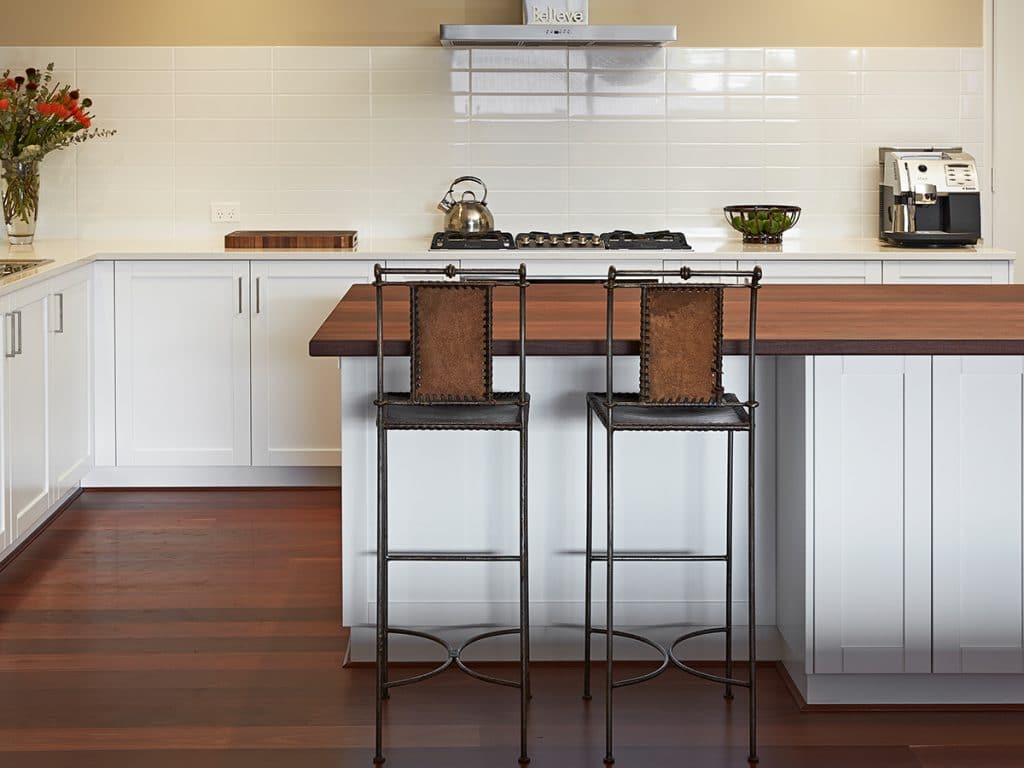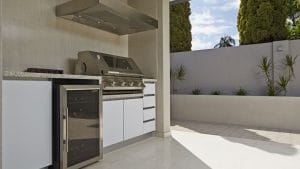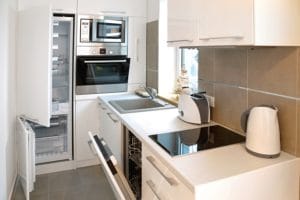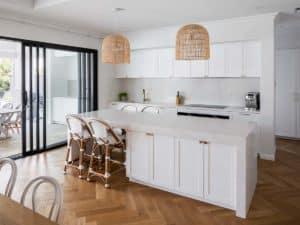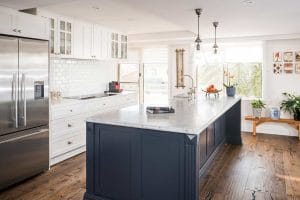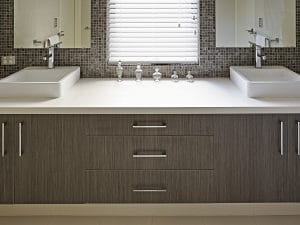Flat pack kitchens appealing to consumers on a tight budget, as the base price is generally cheaper than custom built and retailers tend to convey the impression that they are easy to install. Several CMA members manufacture and retail flat pack kitchens to the WA public and if this is the product for you then you are urged to use these businesses. The reality is however that with all things you generally end up getting what you pay for and before deciding to purchase flat packs it is suggested you consider the following:
1. Flat packs aren’t generally made to fit the space they are going in to. In order to keep costs down flat pack some manufacturers build modular units, with little choice in dimensions. This can mean that available space isn’t always fully utilised (critical in smaller areas) and that dummy cabinets or unusable cabinets are installed to fill gaps.
2. Flexibility of design. Flat pack kitchens don’t offer the flexibility of design that custom built allows for. Modern kitchen design allows for the easy incorporation of space saving and functional componentry. Your kitchen is designed and manufactured with your specific needs in mind. Qualities which aren’t always available with flat pack manufacturing.
3. Australian Standards. Local manufacturers must comply with the Australian Standards for kitchen manufacture and installation. While there is a legal requirement in Australia for imported product to meet standards in order to be sold, this is seldom enforced. It is up to the consumer to prove that the products purchased aren’t compliant and getting the evidence is a very expensive exercise.
4. Warranty. Custom builders are required to provide a full six year warranty on work that comes under the jurisdiction of the Home Building Contracts Act, which includes most kitchens. Most flat packs come with a limited warranty (usually 12 months).
5. Installation. Although many flat pack suppliers will tell you fitting is simple and only requires a portable drill and a screwdriver or two, this is not the case. Kitchen installation is a specialised craft as walls and floors are seldom square or level and there are complex Australian Standards that should be complied with.
6. Solid surface tops. If you are looking to purchase a flat pack kitchen make sure it is strong enough to carry the bench tops of your choice. There have been a number of instances where flat pack kitchens have been removed before completion because the consumer has discovered that it won’t carry their choice of bench tops.
7. Replacement parts. Damage something and it can be very expensive. Many importers and some chain stores won’t sell you a single door for example. So damaging a door (easy to do) can result in you having to buy the entire unit to get a replacement. It is important to remember that if the product has been imported you would be very unlikely to find a replacement part locally.
8. Removal of existing kitchen. In most cases with custom built, the cabinet maker’s quote will include the removal of the existing kitchen and preparation of the space for the installation of the new kitchen. This will often include carrying out minor building alterations and coordination of other trades, making for a seamless project.
9. Resale value of flat pack kitchens. Flat pack kitchens do not add as much value to a home as custom cabinetry. Not only will custom built cabinetry look better and provide better functionality, it will add value to your investment and at the very least will make your home easier to sell.
10. The value factor. Factor in the design element, the hassle free installation, the six year warranty and the fact that your cabinetry will fit the space that you have it’s really more cost effective to go for custom built.
Please note that some flat pack kitchens are manufactured on a ‘custom’ basis, using locally sourced products. These are generally of superior quality to the modular systems marketed by chain stores and are priced accordingly. The moral of the story in the cabinet making industry, like all retail is ‘if it’s too good to be true’ there is usually a catch.

